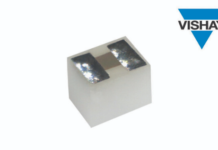
In this period of nanometer semiconductor nodes, the transistor scaling and voltage scaling aren’t in line with each other which defined the failure of the Dennard scaling. Thus, it poses an intense layout challenge.
Reversible computing performs an important function in packages like low energy CMOS, nanotechnology, quantum computing, optical computing, digital signal processing, cryptography, computer graphics and lots more.
Reversible Computing is an advanced severe hobby within the network of the VLSI era because of its lossless properties in handling data, and decreasing power dissipation. It may be beneficial to hyperlink the practical logic designs to Quantum architectures.
Whenever we use any handheld device like our smartphones, laptops or computers, the logic gates which are designed using the transistors start to work. The use of transistors for designing the logic gates is as fast as switches. But the debating point is about the heating of the devices. We all face the fact that our processors and mobile devices discharge lots of heat. The reason behind it is the increase of transistors on-chip.
High Power dissipation leads to the following criteria such as reduced time of operation, reduced mobility and reliability, high efforts for cooling and increasing operational costs.
The 8086 microprocessors had fewer than 30,000 semiconductors, contrasted with contemporary CPU and GPUs which accommodated of billions of semiconductors prompting complicated management of cost, and power. There are billions of semiconductors on a chip; yet, all the semiconductors cannot be applied all of the while. This truth has had a first-rate impact on how CPUs are planned, and this problem will just increase later on. A processor that could make use of simply 5% of its transistors at a few given times will differ from the processor that could make use of half of its semiconductors in some attributes, normally timing and power, finally, researchers are considering the usage of reversible gates.
What’s the purpose of using Reversible Logic?
The answer is the properties of reversible logic gates which comprise constant inputs, garbage outputs, quantum cost, flexibility and hardware complexity. Several studies have been going on in the recent technology world to make the industry as well as academicians habitual on this topic for the development of any future processors or devices. To conclude, we may say that reversible computing can bring a change in the modern day CMOS technology world by partly alleviating the worldwide trouble of transistor warmness dissipation.
Author: Soham Bhattacharya, Master’s Degree Scholar in the field of Electronics and Communication Engineering. His field of research is VLSI, Reversible Computing, Digital circuits and much more.















